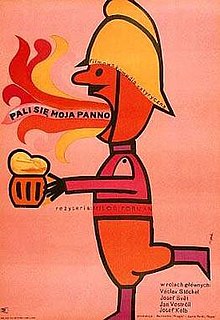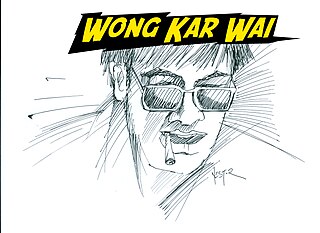 W
WThe Czechoslovak New Wave is a term used for the Czechoslovak filmmakers who started making movies in the 1960s. The directors commonly included are Miloš Forman, Věra Chytilová, Ivan Passer, Pavel Juráček, Jiří Menzel, Jan Němec, Jaromil Jireš, Vojtěch Jasný, Evald Schorm, Hynek Bočan, Juraj Herz, Juraj Jakubisko, Štefan Uher and others. The movement was sometimes called the "Czechoslovak film miracle".
 W
WGerman Expressionism (cinema) consisted of a number of related creative movements in Germany before the First World War that reached a peak in Berlin during the 1920s. These developments in Germany were part of a larger Expressionist movement in north and central European culture in fields such as architecture, dance, painting, sculpture and cinema. This article deals primarily with developments in German Expressionist cinema before and immediately after World War I, approximately from 1910 to the 1930s.
 W
WThe Hong Kong New Wave is a film movement in Chinese-language Hong Kong cinema that emerged in the late 1970s and lasted into the early 2000s.
 W
WItalian futurism, an artistic and social movement, affected the Italian film industry from 1916 to 1919. It influenced Russian Futurist cinema and German Expressionism.
 W
WItalian neorealism, also known as the Golden Age, is a national film movement characterized by stories set amongst the poor and the working class, filmed on location, and frequently using non-professional actors. Italian neorealism films mostly contend with the difficult economic and moral conditions of post-World War II Italy, representing changes in the Italian psyche and conditions of everyday life, including poverty, oppression, injustice, and desperation.
 W
WNew Nigerian Cinema is an emerging phase in Nigerian cinema, in which there became a major shift in the method of film production, from the video format, which came about during the video boom, back to the cinema method, which constituted the films produced in the Golden era of Nigerian cinema history. The films in the New Wave are specifically characterized by improved narrative complexity, aesthetic nuance, much higher budgets and advanced overall production values, when compared to video films from the second generation of filmmakers. They are mostly released theatrically, although some are still released directly on DVD.
 W
WNuevo Cine Mexicano, also referred to as New Mexican Cinema is a Mexican film movement started in the early 1990s. Filmmakers, critics, and scholars consider Nuevo Cine Mexicano a "rebirth" of Mexican cinema because of the production of higher-quality films. This rebirth led to high international praise as well as box-office success, unseen since the golden age of Mexican cinema of the 1930s to 1960s. The quality of Mexican films suffered in the decades following the golden age due in part to Mexican audiences watching more overseas films, especially Hollywood productions. This resulted in the rise of infamous Mexican genres such as Luchador films, sexicomedias and ultimately the low-budget direct-to-video Mexploitation film.
 W
WRemodernist film developed in the United States and the United Kingdom in the early 21st century with ideas related to those of the international art movement Stuckism and its manifesto, Remodernism. Key figures are Jesse Richards and Peter Rinaldi.